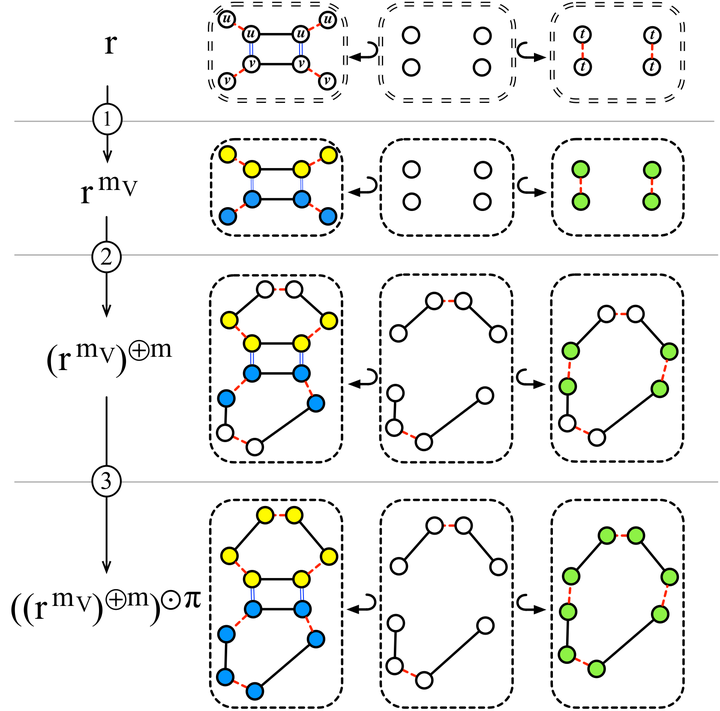 Rule scheme evaluation and instantiation.
Rule scheme evaluation and instantiation.
Abstract
Labeled graphs are particularly well adapted to represent objects in the context of topology-based geometric modeling. Thus, graph transformation theory is used to implement modeling operations and check their consistency. This article defines a class of graph transformation rules dedicated to embedding computations. Objects are here defined as a particular subclass of labeled graphs in which arc labels encode their topological structure (i.e.,, cell subdivision: vertex, edge, face, etc.) and node labels encode their embedding (i.e., relevant data: vertex positions, face colors, volume density, etc.). Object consistency is defined by labeling constraints which must be preserved by modeling operations that modify topology and/or embedding. Dedicated graph transformation variables allow us to access the existing embedding from the underlying topological structure (e.g., collecting all the points of a face) in order to compute the new embedding using user-provided functions (e.g., compute the barycenter of several points). To ensure the safety of the defined operations, we provide syntactic conditions on rules that preserve the object consistency constraints.